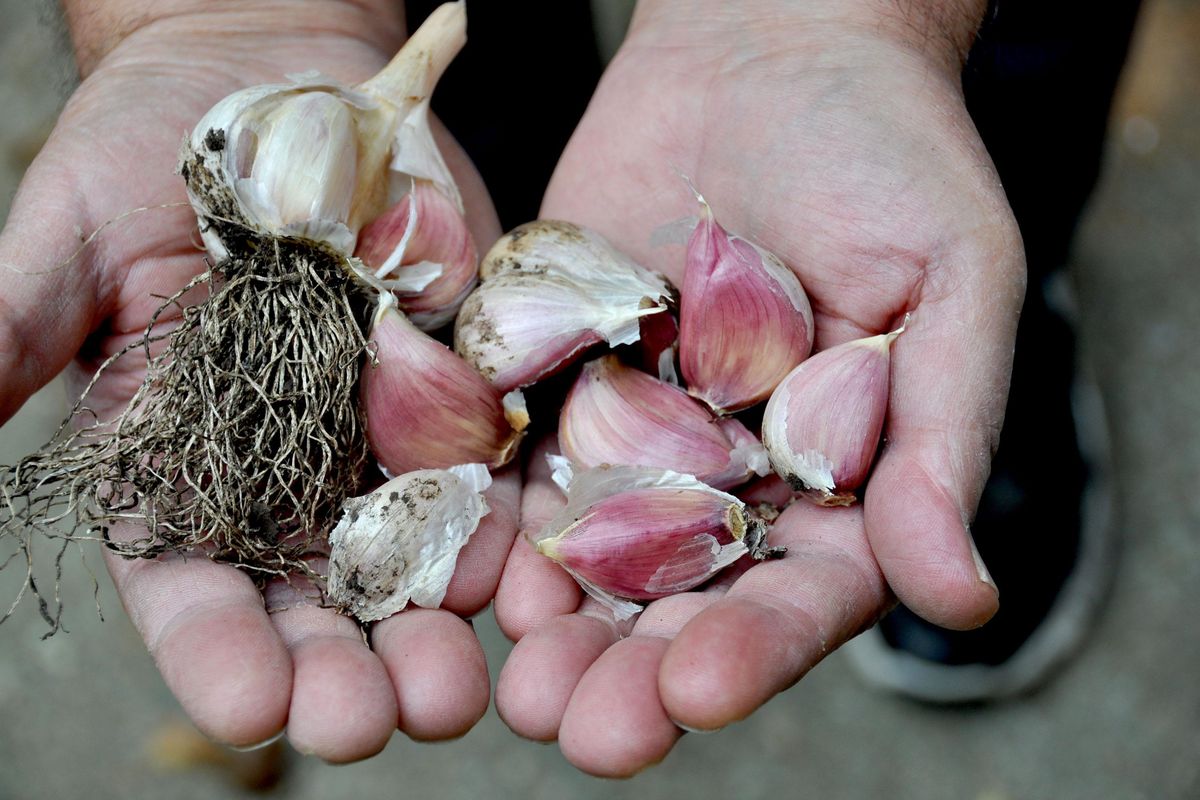Gardening: Time for fall garden chores, garlic planting, too

By the time you read this, the daytime temperatures will be headed into the 50s and the night into the mid- to low 30s. It’s time to pull out the tomato and pepper protection and begin fall garden chores.
It will be important to cover tomato and pepper crops that have been struggling to ripen this year. We might get a couple of more weeks of warmer weather after this weekend, but it’s better to be safe than sorry. Most of us had to work hard to get our crops this far this year. Floating row cover can be laid over the plants, anchored down and left on as it keeps the temperature about 5 to 10 degrees warmer in the day and about 5 degrees warmer at night. Otherwise, stage some bedsheets or plastic tarps in the garden to quickly cover plants. They will easily ward off a 30-degree frost. Watch the forecast – frosts are more likely on clear nights.
October is garlic-planting season. The ground is warm, which encourages root growth, but not warm enough to get the tops growing too much.
To plant garlic, purchase seed garlic from a local source or online. Store-bought garlic may have been treated to keep it from sprouting or may be a variety that can’t handle our cold winters. There are two kinds of garlic: soft neck and hard neck. Soft neck garlic will keep much longer than hard neck varieties. My favorite, Music, a hard neck variety, will hold its quality well into the spring with proper cool storage.
Garlic does best in a fast draining sandy loam. However, this requirement is flexible, so experiment if need be. I have the best results planting it in raised beds that have little weed competition. To plant, divide the heads of garlic and save out the largest cloves for planting; the rest can go into the kitchen. Size matters here.
Plant each clove 1 to 2 inches deep and about 4 inches apart in rows. Water well to give the roots a chance to start growing. If you plant early in October, green tips are likely to emerge but will go dormant. After the ground freezes, cover the bed with 3 or 4 inches of shredded pine needles or leaves to protect the shoots and the bulbs from the freeze-thaw cycles over the winter. In late March, pull the mulch aside to expose the emerging green shoots and dribble some all-purpose fertilizer down the rows to get the plants started.
With the fall chores done, what can we expect out of this winter’s weather? According to the National Weather Service’s Climate Prediction Center, we are in a neutral period between a La Nina and an El Nino, meaning basically the weather could go either way. The Old Farmer’s Almanac says we are in for some good snowstorms. Throw in our somewhat cool summer and early fall, and I’d say make sure you have fuel for the snowblower and some good garden reading material.